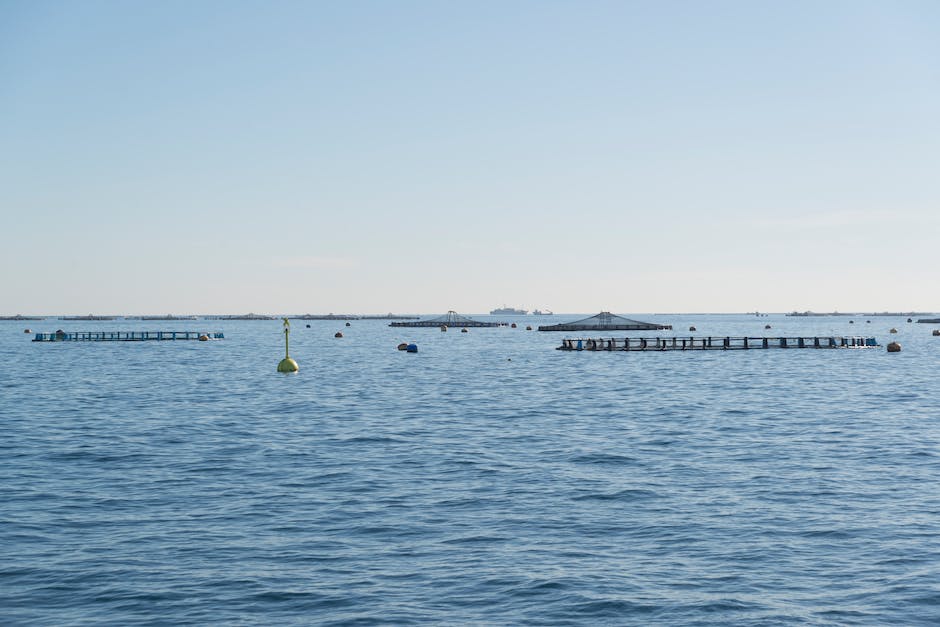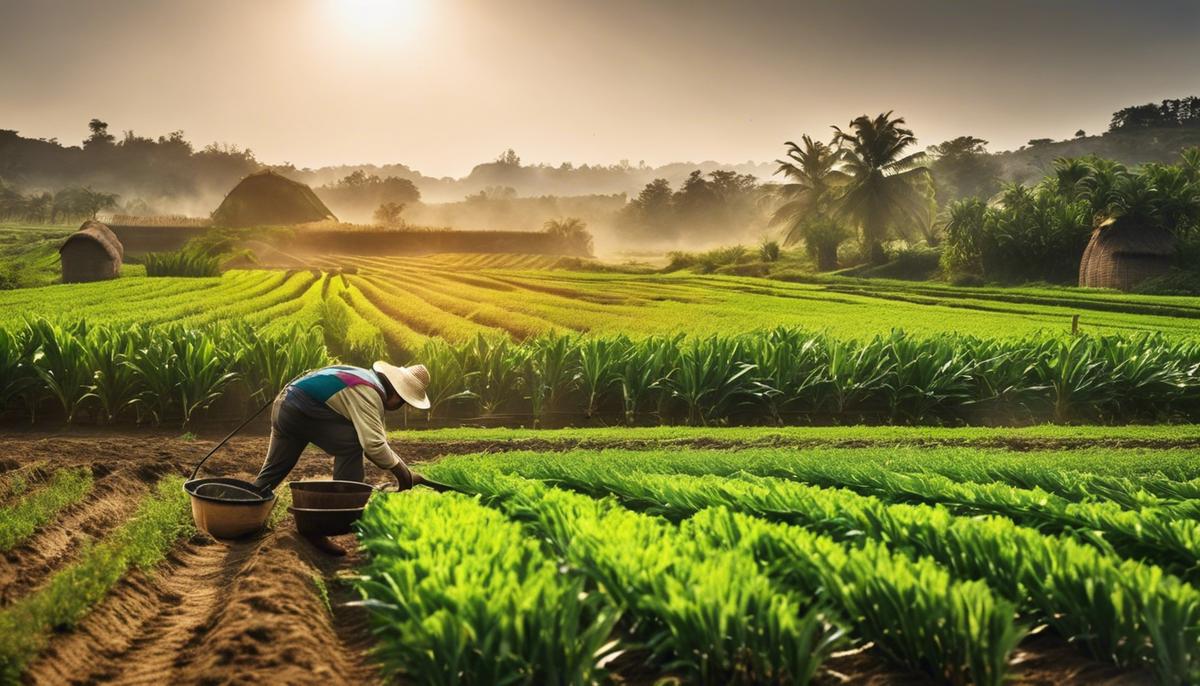
Types of farming system
Description: As the global population burgeons, meeting the escalating demand for food is a cardinal challenge of the 21st century. Since time immemorial, various farming systems have evolved and stratified across cultures and societies, each with unique philosophies and techniques. This discourse elucidates four such integral farming systems – traditional, industrial, organic, and vertical farming systems – scrutinizing their principles, methodologies, implications, and future trajectories. Understanding these farming systems is crucial to steering our path towards sustainable and equitable global food production. Traditional farming systems refer to methods that have been developed by societies over centuries, long before the advent of chemical pesticides and genetically modified organisms. These practices often lean towards being sustainable, with a distinct emphasis on preserving the soil's fertility and the ecosystems surrounding them. A clear focus on biodiversity, the use of resistant crop varieties, and the emphasis on the natural balance of pests and beneficial insects distinguish traditional farming from its modern counterpart. Notably, these time-honored practices are making a stealthy comeback in the light of the negative impacts that excessive pesticide usage, monoculture, and other modern methods are having on the environment, soil, and human health. Such alarming consequences necessitate our thrust towards sustainable farming and here, traditional systems offer wonderfully practical solutions. A distinct example of this resurgence can be seen in the implementation of crop rotation – a traditional practice at its finest. Utilizing this method can benefit modern agriculture in mitigating pest and disease problems, enhancing soil fertility, and ultimately, reducing dependence on synthetic inputs. Similarly, the principle of polyculture inherent in traditional farming practices where different crops are grown together can provide inspiration for redesigning modern monoculture systems. Studies suggest that this practice can improve nutrient recycling, pest control, and yield stability. Further, practices such as terracing, which help prevent soil erosion and aid water conservation, and agroforestry that combines trees with crops, are other traditional methods demonstrating applicability in certain modern scenarios. In essence, traditional farming systems offer a trove of information that can act as valuable blueprints to modern agriculture. Use of locally adapted, disease-resistant crops, nurturing local biodiversity, recycling organic waste, and maintaining soil health are lessons we can learn from ancient practices for the benefit of modern-day farming. The crunching of numbers and the rigorous analysis of years of farm data reveal an undeniable pattern; there is growing evidence of the success of farming techniques inspired by traditional practices. Such interconnectedness between the old and the new can positively shape the face of sustainable agriculture. What this mounting body of evidence clearly underscores is that insights from traditional farming systems hold the potential to not just reshape but revolutionize modern agricultural practices. This is not about replacing the new with the old, but about creating a balanced synthesis capable of feeding the world while ensuring the planet's health and biodiversity. Through the scientific lens, traditional systems coupled with advances of modern agriculture can ideally create a more sustainable future for all. In exploring a more scientific lens of industrial-scale farming systems, one can't overlook the intricate relationship between these practices and their inherent biological complexities. An industrial-scale farm, often measured in terms of thousands of acres, operates like its own ecosystem, with internal dynamics considerably different from traditional, smaller farms. The tradition of biodiversity, with its mix of crops and animals, is replaced with vast monocultures or animal population densities not often seen in nature. Monocultures, the cultivation of a single crop over a large area, present a conundrum. Despite their economical appeal, such uniformity, from a biologist's perspective, presents a veritable feast for pests. From Bacillus thuringiensis, a bacterium destructive to corn and cotton, to the Hessian fly causing costly losses in wheat, monocultures create an environment optimal for explosive pest populations. With an ample food source, these species can wreak havoc swiftly. This necessitates increased reliance on synthetic pesticides, further increasing the farm's ecological footprint and potentially leading to resistant pest populations. Simultaneously, livestock operations at an industrial scale deal with the challenges of massive animal populations. From dense chicken broilers to immense dairy operations, these systems must navigate the proliferation of disease and waste management complications. The risk of spreading pathogens like E. coli and Salmonella can be higher in these contexts, particularly without the checks and balances of a more diverse ecosystem. The vast quantities of animal waste contribute to additional issues, often resulting in waste lagoons, large open-air ponds storing feces and urine. These often emit greenhouse gases, contribute to water and soil pollution, and produce an unpleasant aroma, disrupting local air quality. Another layer of complexity arises from the inherent fertility limits of soil subjected to consistent, intensive farming. Soil fertility, a ballet involving microorganisms, organic material, and minerals, can be severely disrupted by continuous planting of a single species. Crop rotation has its place here, helping replenish and maintain fertility, but on a large scale can be economically challenging. Heavier reliance on synthetic fertilizers has become a solution, though this contributes to runoff pollution, affecting local waterways and, ultimately, leading to oxygen-starved aquatic dead zones. In light of these complexities, understanding farming systems at an industrial scale requires the integration of disciplines – from biology and agronomy, to environmental science and economics. These systems stand at the crossroads of human necessity and ecological balance, necessitating thoughtful stewardship that considers both sustainability and our need for abundant food production. As we move forward, grafting traditional wisdom with advancements in science and technology will be paramount in navigating the complexities and consequences of industrial-scale farming. Organic farming, as a practice that integrates scientific knowledge with principles of environmental sustainability, presents a transformative option for an agriculture industry constrained by various challenges. Embodied in the concept of organic farming is a definitive renouncement of potentially harmful synthetic pesticides and fertilizers, used heavily in current, large-scale farming operations. This renouncement can be seen as acknowledgment of the inherent value in embracing bio-based and naturally occurrent pest and fertility management techniques. An evidence-based shift is amplified in the use of biological control agents in organic farming, utilizing predators, parasites, and pathogens to keep pest populations under control. This mirrors nature’s own system of checks and balances, with a deep-seated understanding of the ecological relationships between species. This benefits not only crop health but also the wider ecosystem, reducing the negative impact on non-target species often linked with synthetic pesticides. Moreover, the usage of organic matter to replenish soil fertility in lieu of synthetic fertilizers offers enhanced sustainability. Composting, green manuring and the use of animal manure, key practices within organic farming, service this precise purpose. Such techniques improve soil structure, nutrient content and water holding capacity, while also promoting beneficial soil organisms. The use of cover crops, an often-underrated facet of organic farming, also showcases the symbiosis of science and sustainability. Implemented in non-growing seasons, cover crops protect and enrich the soil. They help prevent the runoff and erosion often associated with synthetic fertilizers, by maintaining soil cover and adding organic matter. Here, an intrinsic knowledge of plant biology and environmental benefits marries perfectly with the goals of sustainable agriculture. Within this scientific/practical framework of organic farming lies a profound respect for biodiversity – upholding the belief that diversity in an agricultural system leads to increased resilience and productivity. Practices such as mixed cropping and multispecies livestock farming are suggestive of this stance - mimicking natural ecosystems rather than aiming for sterile uniformity. Another scientific principle frequently applied in organic farming is the notion of using renewable resources and conserving soil and water. Green energy sources and efficient irrigation techniques are often utilized, emphasizing closed-loop agricultural systems that align closely with the concept of zero waste. The sustainable essence of organic farming also extends beyond the soil itself, encompassing considerations of animal welfare. Organic livestock farming entails providing outdoor access for animals, promoting natural, behavioral rhythms, and significantly reducing the use of antimicrobials, thus championing a system that respects all forms of life. In conclusion, organic farming as a trend is a beacon of hope amid heightened concerns about environmental health and climate change. It is a practice characterized by observational prowess, scientific application, and above all, deep-seated respect for nature. A model that symbolizes an informed understanding of how best to work with nature, rather than against it - leading to an agriculture that nourishes both the planet and its inhabitants. As human civilization reckons with an ever-increasing urban population, one solution gaining traction in the scientific community is the concept of vertical and urban farming. This revolutionary method contrasts sharply with traditional rural farming, offering a sustainable path that encompasses essential traits of environmental conservation and resource efficiency - all within the confines of urban spaces. Vertical farming, in its essence, is the practice of producing food on vertically inclined surfaces. Instead of spreading out horizontally, acres of farmlandest are condensed into multi-storied structures, hosting a multitude of crops. A variety of techniques are employed in these structures, such as hydroponics, aeroponics, and aquaponics, all yielding high output using minimal resources. Urban farming, on the other hand, encompasses a wide array of practices involving growing, processing, and distributing food in or around urban areas. This can involve anything from community gardens to rooftop farming. Unlike rural farming, these practices have the potential of integrating into the urban economic and ecological systems, contributing to increased food security and decreasing the overall environmental impact due to transportation of agricultural products. From a resource efficiency perspective, vertical and urban farming show significant promise. By stacking layers of vegetation, these farming methods use space efficiently, making them a viable solution in overcrowded cities. Furthermore, these methods generally use recirculation systems, resulting in significant water savings - up to 95% compared to conventional farming. Moreover, through controlled indoor conditions, the uncertainty associated with unpredictable weather patterns or pests is eliminated, reducing crop losses. This is a substantial advantage as climate change, and its associated extreme weather events, become more frequent. But what does science say about it? Research into vertical and urban farming has yielded encouraging results. Studies suggest that if implemented correctly, vertical farming can produce higher yields than traditional farming methods, without the associated negative ecological impacts. Urban farms, even small-scale ones, have been found to make significant contributions to food security in urban areas. Furthermore, these systems can bring about bio-based circular economies in cities, turning organic waste streams into resources. For instance, organic urban waste can be composted to provide nutrient-rich soil, which can then be used in urban and vertical farms. To summarize, vertical and urban farming, from a sustainable development point of view, offer considerable promise for the future. They not only present an answer to fundamental challenges - lack of space, water scarcity, and food security - but also bring a range of environmental benefits. This research area is dynamic and evolving, with the immense potential of becoming a significant cornerstone in the face of growing urbanization. The global landscape of agriculture is as diverse as it is dynamic, as our exploration of traditional, industrial, organic and vertical farming systems has demonstrated. Appreciating this diversity and complexity is pivotal to strategizing sustainable food production and security. While traditional practices hold lessons of adaptive farming and the industrial model promises impressive yields, both have their respective challenges and limitations. Organic farming endeavours to balance productivity with environmental safeguarding - a feat that is not without hurdles. Meanwhile, vertical and urban farming, though in their nascent stages, offer exciting possibilities for the future of agriculture. As they say, there is no one-size-fits-all when it comes to farming. Solutions must carefully consider location-specific ecology, culture, and resources while pushing technological innovation and sustainability to the forefront. As we stand on the precipice of an era where our planet necessitates thoughtful stewardship, exploring the diverse tapestry of farming practices becomes crucial for ensuring a sustainable future. Sustainable Agriculture heralds a paradigm that evokes a symbiosis with nature, prompting a return to farming methods that honor the earth's delicate balance. Meanwhile, the advent of Industrial Farming Systems has revolutionized our capacity to meet the global demand for food, albeit with environmental and socio-economic footprints that merit in-depth scrutiny. In the heart of our concrete expanses, Urban Agriculture emerges as a beacon of community resilience and self-sufficiency, redefining our relationship with local food systems. The multifaceted strategy of Agroforestry Systems underlines the genius of ecological harmony, weaving together flora and fauna to breathe life back into modern agriculture. And at the aquatic edge of innovation, Aquaculture and Hydroponics challenge conventional wisdom, opening up new frontiers for food production in our quest for sustainability. As we navigate through these practices, we gain a holistic overview of the present and a glimpse into the future of farming. Sustainable agriculture stands at the forefront of a paradigm shift in farming methodologies that promise to redefine our relationship with the land we cultivate. This comprehensive approach to agriculture centers upon the long-term stability of farming ecosystems, ensuring that they remain productive and healthy for future generations. It is both a philosophy and a tangible set of practices that aim to minimize environmental impact, support fair labor practices, maintain economic viability, and produce sufficient and nutritious food. The core of sustainable agriculture is the principle of stewardship. It underlines the responsibility of managing natural resources wisely, preserving soil integrity, water quality, and biodiversity. For instance, soil conservation techniques such as crop rotation, cover cropping, and reduced tillage help to prevent erosion, enhance soil structure, and promote a balanced ecosystem within the soil microbiome. By diversifying crops, farmers can also reduce the susceptibility of their fields to pests and diseases, diminishing the need for chemical pesticides. Water conservation is another critical component. The implementation of advanced irrigation techniques, such as drip irrigation and scheduled watering based on local climate conditions, significantly improves water use efficiency. These methods help in preserving precious freshwater resources and in mitigating the impacts of droughts. Innovations in sustainable agriculture are continuously evolving. Integrated pest management (IPM) is one such development. This approach uses a combination of biological control, habitat manipulation, and appropriate plant selection to manage pest populations with minimal use of chemicals. IPM strategies can substantially decrease the environmental footprint of pest control while maintaining crop yields. Sustainable agriculture also addresses the social and economic aspects of farming. Fair labor practices and local food systems enhance the quality of life for farm workers and contribute to the economic sustainability of rural communities. By connecting farmers directly with local consumers, through farmers' markets or community-supported agriculture (CSA), the economic loop is shortened, thereby reducing transportation emissions and fostering relationships between producers and consumers. Furthermore, the adaptation to sustainable practices often requires the integration of traditional knowledge with modern technology. This synthesis enables the tailoring of agricultural techniques to local environments, which is remarkably effective in addressing the specific challenges of diverse landscapes. To encapsulate, sustainable agriculture is reshaping the ethos of farming by embedding environmental resilience, social responsibility, and economic prudence into agricultural systems. It is an essential narrative in ensuring food security in an era fraught with climatic challenges, resource depletion, and a rising global population. The continued refinement and adoption of sustainable practices in agriculture are imperative for the endurance of farming and the environment that cradles it. Industrial farming systems, colloquially known as factory farming, have reshaped the landscape of agriculture over the recent decades. While these systems have remarkably increased food production, meeting the dietary needs of a booming global population, the environmental ramifications raise profound concerns that merit attentive scrutiny. Primarily, industrial farming has been a significant contributor to greenhouse gas emissions, a central factor in global climate change. Methane, in particular, emanates copiously from livestock rearing, notably from cattle. The expanding reliance on monocultures—vast spans of land dedicated to a single crop—fosters a decline in biodiversity. This loss is not merely confined to the variety of plants cultivated but extends to the insects, birds, and microorganisms that form a diverse ecological web. Moreover, these monocultures are often heavily reliant on synthetic fertilizers and pesticides, which, despite bolstering crop yields, carry with them the inadvertent consequence of leaching into waterways. This results in phenomena such as algal blooms which deplete oxygen in water, leading to "dead zones" where marine life can hardly persist. These chemicals can also degrade soil structure and fertility over the long term, causing erosion and decreasing its ability to act as a carbon sink. It is imperative to address the consequence of antibiotic resistance due to the common practice within industrial livestock operations to administer antibiotics prophylactically. This overuse promotes the emergence of resistant strains of bacteria, posing a serious threat to public health. Food production under such systems often overlooks animal welfare, with numerous species confined in restricted spaces, thwarting their natural behaviors. This raises ethical questions while also potentially impacting the quality and safety of the food supply. Finally, industrial agriculture’s robust supply chains and dependence on fossil fuels for the manufacture and transportation of inputs, as well as the products themselves, suggest an unsustainable energy footprint, in stark contrast with local food systems which typically consume less energy and support local economies. In conclusion, while industrial farming systems have been instrumental in scaling up food production, the attendant environmental impacts are substantial and multifaceted. It is critical that society continues to scrutinize these practices, assessing their long-term viability and exploring agricultural methodologies that proffer a harmonious balance between abundant food production and environmental stewardship. The emergent discipline of urban agriculture is increasingly acknowledged as a harbinger of ecological stability within the metropolitan milieu. As cities burgeon, sweeping all available space in their expansion, urban agriculture emerges as a critical junction between human habitations and the complex ecological webs that ensue. Photosynthesis, as a natural arbiter of air purification and oxygen production, is paramount in the detoxification of urban atmospheres. The cultivation of flora within city confines directly abates the concentration of carbon dioxide, a principal greenhouse gas, harnessing urban agriculture as an ally in the mitigation of anthropogenic climate change. Vegetative canopies have also shown aptitude in the absorption of particulate matter, rendering the air less noxious to urban denizens. Urban agriculture dispenses habitats and refuges for diverse biota, facilitating the conservation of urban biodiversity. The introduction of agricultural green spaces offers sanctuary for pollinators, birds, and a myriad of beneficial insects. These organisms not only contribute to the pollination of crops but are indispensable in the control of pest species through natural predation, which lessens the dependency on chemical interventions. Urban land enveloped in asphalt and concrete experiences exacerbated thermal retention, a phenomenon known as the urban heat island effect. Green spaces within cities, notably those attributed to agricultural ventures, have a palliative effect on this phenomenon. Vegetated areas are instrumental in coolness dispersions, through both shading and transpirational processes, thereby moderating the localized microclimates and contributing to urban resilience against extreme heat events. The inclusion of green spaces within the urban weave not only offers aesthetic enhancement but tangibly contributes to the well-being of city occupants. Studies illustrate that interaction with nature, even within an urban context, facilitates mental health by alleviating stress, enhancing mood, and fostering social cohesion amongst the populace. Urban agriculture, thus, serves not solely as a provisioner of sustenance but rather as a restorative enclave for the psyche. The principles of urban agriculture are firmly wedded to the efficacious recycling of organic matter. Composting, the process of reconstituting organic waste into fertile soil, exemplifies the cyclic utilization of nutrients. Urban agriculture elevates waste from a liability to a resource, tapping into the ostensibly untapped reservoirs of organic materials that cities often produce in abundance. This practice engenders a closed-loop system, reducing the environmental footprint of waste management in urban areas. In summation, urban agriculture holds the potential to transform cities from mere landscapes of consumption to vibrant ecosystems that offer a myriad of services beyond the provision of food. Incorporating agriculture into urban planning can bestow a multifaceted array of ecological boons: from air quality to biodiversity, thermal regulation, mental well-being, and waste recycling. It beckons a reframing of agriculture – from an isolated rural practice to an intrinsic element of urban sustainability. The conscientious integration of agriculture into the urban fabric is not merely advantageous; it is becoming an indispensable facet of sustainable city ecosystems in the 21st century and beyond. Agroforestry systems, a synergistic approach which combines agriculture and forestry practices, play a pivotal role in enhancing biodiversity and farm productivity. By design, these systems incorporate trees and shrubs into agricultural landscapes, fostering a network of ecological interactions that benefit the surrounding environment and the farms they sustain. In the sphere of biodiversity, agroforestry serves as a bastion for various species of flora and fauna. The introduction of trees in agricultural settings creates microhabitats, which are crucial for many organisms. These microhabitats provide shelter, breeding grounds, and food for a vast array of wildlife, from birds and insects to larger mammals. Furthermore, agroforestry systems can act as ecological corridors that facilitate movement and genetic exchange between wildlife populations that might otherwise be isolated due to monocultural practices or urban sprawl. The multi-layered canopy structure inherent in agroforestry not only supports diverse wildlife but also engenders a robust ecosystem. This diversity can lead to more effective nutrient cycling and soil regeneration processes. The deep root systems of perennial trees and shrubs lessen soil erosion and improve water retention, two critical factors for maintaining soil health and resilience against extreme weather events. These perennial root systems also have the advantage of capturing atmospheric carbon, contributing to carbon sequestration initiatives that seek to mitigate the ongoing climate crisis. Farm productivity, too, is markedly enhanced through the adoption of agroforestry practices. Polycultural systems reduce the risk of total crop failure due to pests or disease by dissuading the proliferation of host-specific threats. The intentional design of these systems aims to utilize ecological niches, enabling farmers to harvest multiple yields from the same plot of land throughout the year. For instance, shade-tolerant crops can be cultivated under the canopy of fruit-bearing trees, increasing the overall output of the land. A lesser-discussed yet equally important aspect of agroforestry systems is their potential to strengthen pollinator networks. Trees and shrubs often flower at different times, providing a longer blooming season which is essential for supporting pollinator species. Pollinators, in turn, are critical for the successful cultivation of many crops, meaning their health and abundance have direct economic implications for farmers. Lastly, agroforestry systems can be tailored to specific regional conditions. This customizability enables them to integrate endemic species and traditional agricultural practices, preserving cultural heritage and biological diversity. By valuing and leveraging local knowledge and biological resources, agroforestry systems become more than an agricultural methodology—they transform into a mode of living in harmony with the land. The evidence supporting the multivalent benefits of agroforestry on biodiversity and farm productivity is thus clear and substantial. These systems offer a confluence of ecological services that goes beyond mere sustenance, with implications for climate change mitigation, ecosystem restoration, and socio-economic stability. The incorporation of agroforestry into agricultural planning is not merely an option—it is an imperative for a sustainable future. Advancements in the domains of aquaculture and hydroponics are increasingly significant for the advent of modern farming under the aegis of sustainable agriculture. As food demand burgeons concurrently with environmental awareness, innovative methodologies are indispensable for amplifying food production without exacerbating ecological or social systems. Aquaculture, or aquatic farming, harbors great potential for augmenting the supply of protein-rich food. One of the salient innovations in this field is recirculating aquaculture systems (RAS). RAS conserves water by recycling it within the system, thus drastically reducing the volume needed from external sources. This technology recaptures fish waste, transforming it into nitrates and other nutrients, which can be potential fertilizers for plants. By meticulously controlling environmental parameters, including water quality and temperature, RAS optimizes the health and growth rate of aquatic organisms while mitigating environmental impact. Hydroponics, the soil-less cultivation of crops, integrates seamlessly with modern aquaculture practices. In systems known as aquaponics, the symbiotic relationship between fish and plants is harnessed. The waste produced by fish provides organic nutrition for the plants, while the plants filter and purify the water, which is then recirculated back to the aquaculture system. This closed-loop system exemplifies a remarkable stride in sustainability, substantially escalating the efficiency of resource utilization. The use of automated monitoring systems has become increasingly mainstream in both aquaculture and hydroponic applications. Such systems can supervise nutrient levels, pH balance, water temperature, and other crucial factors with precision. Automation bestows farmers with detailed insights and alerts, enabling swifter and more informed decision-making to enhance yields and crop health. Furthermore, LED lighting technology has revolutionized hydroponic setups, enabling year-round crop production independent of external climatic conditions. With LEDs, the specific light spectra conducive to different stages of plant growth can be administered, thereby elevating the efficiency of photosynthesis and ultimately crop yields. Nonetheless, the integration of renewable energy sources remains pivotal in rendering aquaculture and hydroponics genuinely sustainable. Solar, wind, and biomass energy can power pumps, lighting, and heating systems, curtailing the carbon footprint of these food production systems. Such integration also aligns with global objectives to transcend reliance on non-renewable energy sources. In conclusion, the marriage of aquaculture with hydroponic farming promulgates a blueprint for a more sustainable and resilient agricultural sector. Innovations such as RAS, aquaponics, automated monitoring, and LED lighting, coupled with the infusion of renewable energy, are pivotal to satisfying the escalating global hunger for food without compromising the integrity of our planet or populations. The conscientious application of these advancements heralds not only an era of agricultural efficiency but also a testament to human ingenuity's role in fostering ecological harmony. The journey through the myriad of farming practices reveals both the ingenuity of human innovation and the pressing need to recalibrate our relationship with nature. From the thoughtful complexities within sustainable and urban agricultural practices to the high-yield potential rooted in industrial systems, each method carries its own set of challenges and opportunities. Agroforestry traces a path towards an integrated, eco-friendly approach to land use, while aquaculture and hydroponics redefine what it means to grow food in harmony with the environment. Ensuring the ongoing vitality of our planet's ecosystems demands that we continue to adapt and learn. Embracing these varied agricultural methods does more than just feed the world today; it sows the seeds for a more resilient and nourishing tomorrow.Types of farming system
Traditional Farming Systems
In today's world where modern agricultural methods seem to reign supreme, examining the relevance of age-old farming practices might seem akin to looking into the rearview mirror while travelling at warp speed. However, the reality is that traditional farming methods offer insights that can remarkably influence the present-day practice of agriculture. Attempting to intertwining the past with the present may surprisingly usher in a future where both paradigms of farming can co-exist, be mutually beneficial, and potentially revolutionize our approach to food production.

Industrial Farming Systems
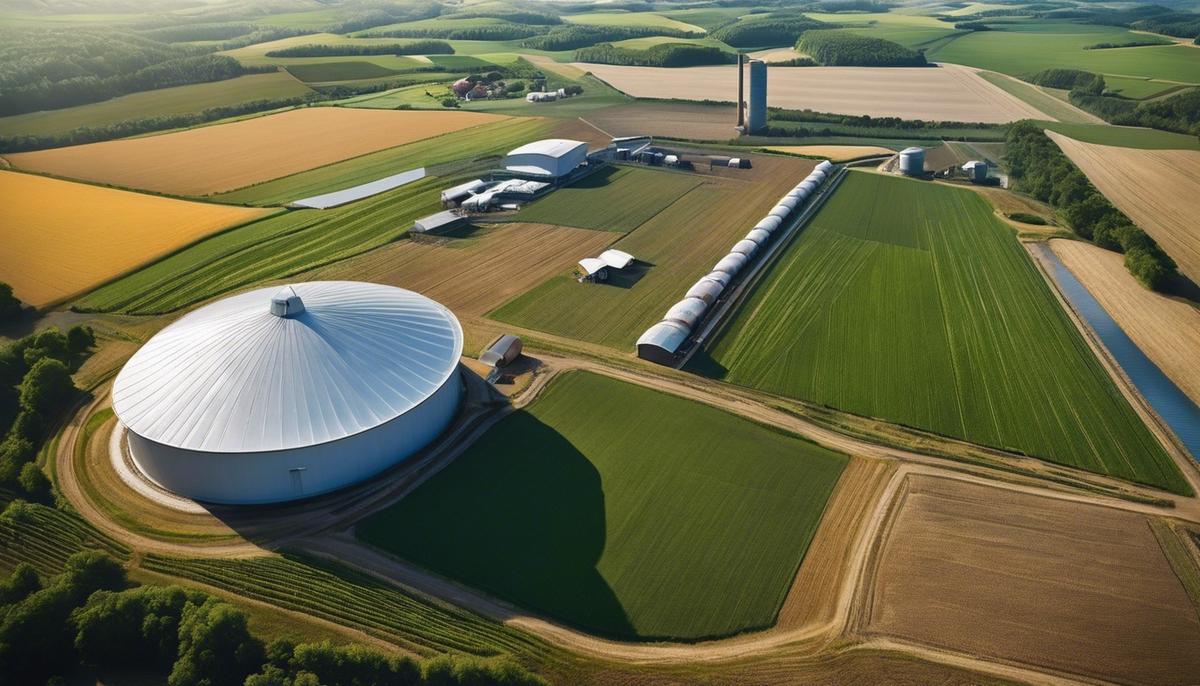
Organic Farming Systems

Vertical and Urban Farming

Various types of farming
Sustainable Agriculture
Sustainable Agriculture: The Bedrock of Future Farming Practices
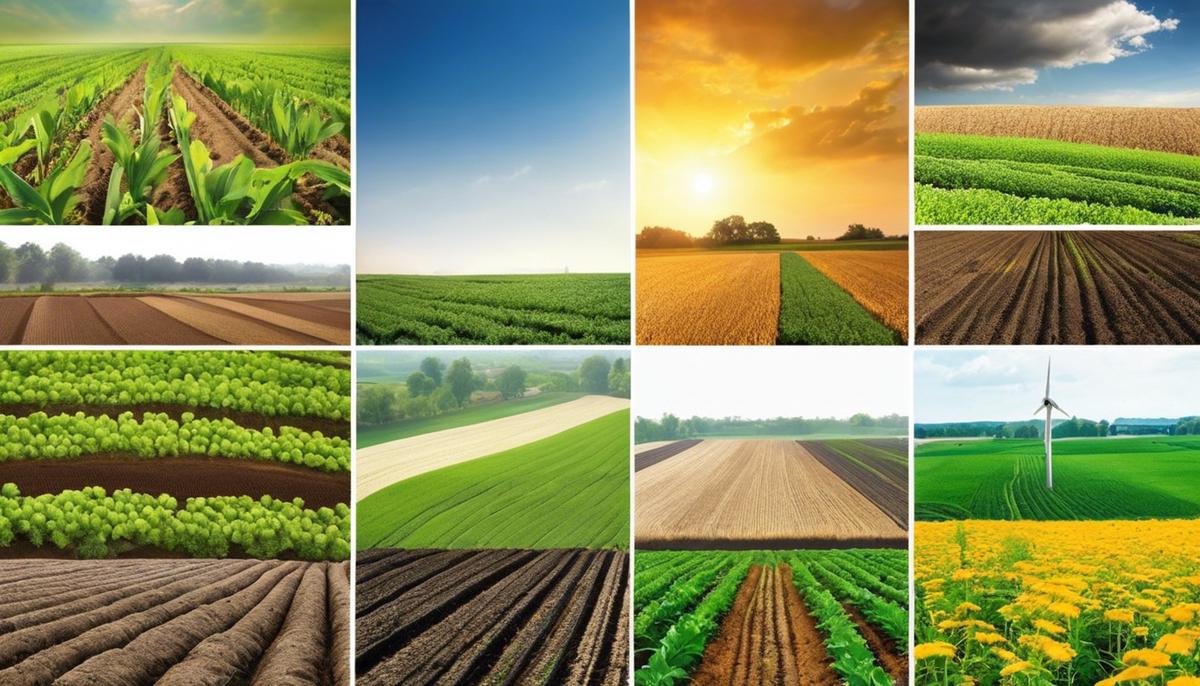
Industrial Farming Systems
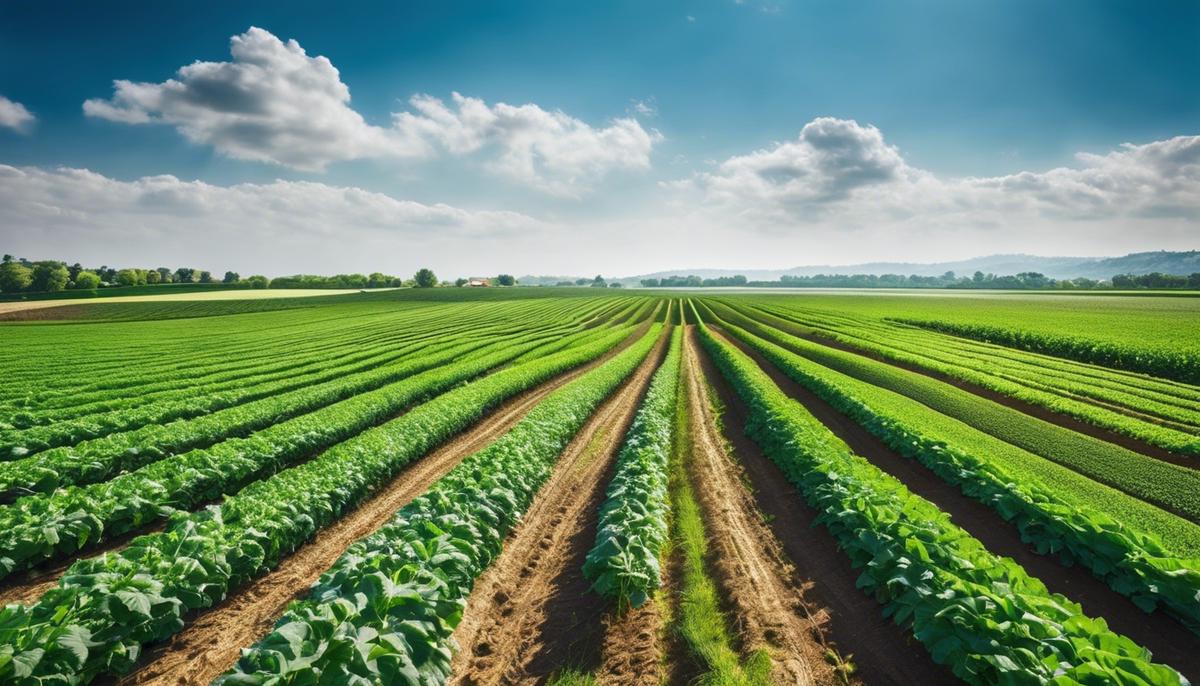
Urban Agriculture
Urban Agriculture as a Catalyst for Ecological Harmony in the Concrete Jungle
Air Quality Amelioration through Urban Agriculture
Enhancement of Urban Biodiversity
Thermal Regulation and the Urban Heat Island Effect
Contributions to Mental Health and Well-being
Waste Management and Nutrient Recycling
Future Perspectives on Urban Ecosystem Services

Agroforestry Systems
The Multifaceted Impact of Agroforestry Systems on Biodiversity and Farm Productivity

Aquaculture and Hydroponics
Aquaculture and Hydroponics: Synergy for Sustainable Food Production
